los angeles
 When the Civil Engineers build a dam, it is a structure that is expected to last for many years to come. The build dams for recreational purposes, as well as economic purposes. In August of 1924, civil engineers began construction of the Saint Francis Dam. The dam was to be a curved gravity dam located near Los Angeles in the San Francisquito Canyon, close to Santa Clarita. Chief Engineer William Mulholland supervised the project as a part of the Los Angeles aqueduct system.
When the Civil Engineers build a dam, it is a structure that is expected to last for many years to come. The build dams for recreational purposes, as well as economic purposes. In August of 1924, civil engineers began construction of the Saint Francis Dam. The dam was to be a curved gravity dam located near Los Angeles in the San Francisquito Canyon, close to Santa Clarita. Chief Engineer William Mulholland supervised the project as a part of the Los Angeles aqueduct system.
The construction of the dam was completed on May 6th, 1926. While the dam was very new, it still began to exhibit signs instability and leaks shortly after the work was completed. Apparently, there were a few flaws in the construction of this dam. The problems with the Saint Francis Dam continued until on March 12, 1928 at 11:57pm, the dam suffered a catastrophic failure causing a massive flood with little to no warning for residents  in the surrounding area. Many thought that the rumbling from the dam may have been an earthquake, only to find out very quickly that the dam had failed in a catastrophic way. Without warning, the flood water came rushing down the river and into the unsuspecting town.
in the surrounding area. Many thought that the rumbling from the dam may have been an earthquake, only to find out very quickly that the dam had failed in a catastrophic way. Without warning, the flood water came rushing down the river and into the unsuspecting town.
The resulting flood left between 385 – 430 people dead according to some of the official estimates. In reality, the number may have been higher…possibly over 600 dead. The carnage caused the collapse to be considered one of the worst civil engineering failures in United States history. The flood waters…12 billion gallons strong were initially 140 feet high. Several Southern California towns suffered massive damage due to the collapse including Castaic, Saugus, Santa Paula, Saticoy, and Filmore. It was estimated that 1,200 homes were d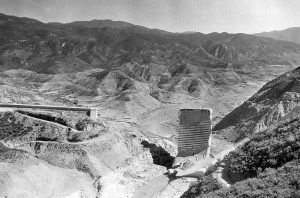 estroyed with damages in the $7 million range.
estroyed with damages in the $7 million range.
Investigations into the collapse found that issues with the dam’s foundation were at fault. It was also later reported that the dam may have been built on the site of an old landslide that could have contributed to the foundation issues. The collapse ended Mulholland’s career, because many people blamed him for the catastrophe, partially because he and his assistant had personally inspected the dam just 12 hours before the failure and had deemed it safe. It was determined that the dam would not be rebuilt, and what was left of the Saint Francis Dam was demolished in May of 1929.
 Just like cars, planes have blind spots too. It makes sense, and in reality, the blind spots on planes make the blind spots in cars seem so much less significant. It makes no difference really, because during a crash the result is catastrophic. Of course, there is a better chance, in a collision, to survive in a car than a plane. Of course, it depends on how bad the crash was and where, as to what chances there are of survival in car or plane.
Just like cars, planes have blind spots too. It makes sense, and in reality, the blind spots on planes make the blind spots in cars seem so much less significant. It makes no difference really, because during a crash the result is catastrophic. Of course, there is a better chance, in a collision, to survive in a car than a plane. Of course, it depends on how bad the crash was and where, as to what chances there are of survival in car or plane.
On Monday, September 25, 1978, Pacific Southwest Airlines (PSA) Flight 182 departed Sacramento for San Diego, with a stop in Los Angeles. Flight 182 was a Boeing 727-214 commercial airliner, registration, N533PS. The seven-person, San Diego-based crew consisted of Captain James McFeron, who was 42; First Officer Robert Fox, who was 38; Flight Engineer Martin Wahne, who was 44; and four flight attendants. The flight from Sacramento to Los Angeles went smoothly. At 8:34am, Flight 182 departed Los Angeles. First Officer Fox was the pilot flying. There were 128 passengers on board, including 29 PSA employees. The weather in San Diego that morning was sunny and clear with 10 miles of visibility. It was an ideal day to fly.
At 8:59 a.m., the approach controller alerted the PSA crew about a small Cessna 172 Skyhawk aircraft nearby.  The Cessna was being flown by two licensed pilots. One was Martin Kazy Jr, who was 32. He possessed single-engine, multi-engine, and instrument flight ratings, as well as a commercial certificate and an instrument flight instructor certificate. He had flown a total of 5,137 hours. The other, David Boswell, who was 35. He was a US Marine Corps Sergeant. He possessed single-engine and multi-engine ratings and a commercial certificate. Boswell had flown 407 hours at the time of the accident. He was practicing under Kazy, intent on achieving his instrument rating.
The Cessna was being flown by two licensed pilots. One was Martin Kazy Jr, who was 32. He possessed single-engine, multi-engine, and instrument flight ratings, as well as a commercial certificate and an instrument flight instructor certificate. He had flown a total of 5,137 hours. The other, David Boswell, who was 35. He was a US Marine Corps Sergeant. He possessed single-engine and multi-engine ratings and a commercial certificate. Boswell had flown 407 hours at the time of the accident. He was practicing under Kazy, intent on achieving his instrument rating.
The men in the Cessna had departed from Montgomery Field and were navigating under visual flight rules, which did not require the filing of a flight plan. As is common while learning instrument flying, Boswell was wearing a “hood” to limit his field of vision straight ahead to the cockpit panel, much like an oversized sun visor with vertical panels to block peripheral vision. At the time of the collision, the Cessna 172 light aircraft, registration, N7711G was on the missed approach (in visual meteorological conditions) from Lindbergh’s Runway 9, heading east and climbing. The Cessna was in communication with San Diego approach control. The Cessna came up from below the Boeing 727. The PSA plane failed to keep track of the Cessna, or report losing sight of it when it moved into the blind spot. It was a recipe for disaster. The larger plane virtually ran over the  smaller plane over San Diego, California, at 9:01am.
smaller plane over San Diego, California, at 9:01am.
Both aircraft crashed into North Park, a San Diego neighborhood. Flight 182hit a house, and impacted the ground just north of the intersection of Dwight and Nile, killing all 135 people aboard the aircraft and seven people on the ground in houses, including two children. The Cessna impacted on Polk Av between 32nd St and Iowa St killing the two on board. Nine others on the ground were injured and 22 homes were destroyed or damaged by the impact and debris. It was Pacific Southwest Airlines’ first fatal accident.
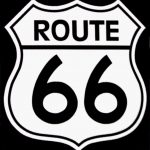
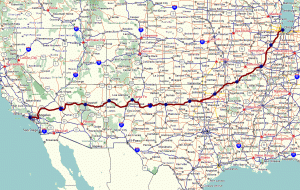 In years gone by, US Route 66 was also known as the Will Rogers Highway, the Main Street of America, or the Mother Road. It was one of the original highways within the US Highway System. US Highway 66 was established on November 11, 1926, with road signs erected the following year. The highway became one of the most famous roads in the United States, and originally ran from Chicago, Illinois, through Missouri, Kansas, Oklahoma, Texas, New Mexico, and Arizona before ending at Santa Monica, California, covering a total of 2,448 miles. It was highlighted by both the hit song “(Get Your Kicks) on Route 66” and the Route 66 television show in the 1960s, and later, “Wild Hogs.” After 59 years, on June 27, 1985, when the American Association of State Highway and Transportation Officials decertified the road and removed all its highway signs, and the famous Route 66 entered the realm of history.
In years gone by, US Route 66 was also known as the Will Rogers Highway, the Main Street of America, or the Mother Road. It was one of the original highways within the US Highway System. US Highway 66 was established on November 11, 1926, with road signs erected the following year. The highway became one of the most famous roads in the United States, and originally ran from Chicago, Illinois, through Missouri, Kansas, Oklahoma, Texas, New Mexico, and Arizona before ending at Santa Monica, California, covering a total of 2,448 miles. It was highlighted by both the hit song “(Get Your Kicks) on Route 66” and the Route 66 television show in the 1960s, and later, “Wild Hogs.” After 59 years, on June 27, 1985, when the American Association of State Highway and Transportation Officials decertified the road and removed all its highway signs, and the famous Route 66 entered the realm of history.
The idea of building a highway along this route was first mentioned in Oklahoma in the mid-1920s. It was a way to link Oklahoma to cities like Chicago and Los Angeles. Highway Commissioner Cyrus Avery said that it would also be a way of diverting traffic from Kansas City, Missouri and Denver. In 1926, the highway earned its official designation as Route 66. The diagonal course of Route 66 linked hundreds of mostly rural communities to the cities along its route. This was to allow farmers to have an easy transport route for grain and other types of produce for distribution to the cities. In the 1930s, the long-distance trucking industry used it as a way of competing with the railroad for dominance in the shipping market.
During the Dust Bowl years of the 1930s, Route 66 was the scene of a mass westward migration, when more than 200,000 people traveled east from poverty-stricken, drought-ridden areas of California. John Steinbeck immortalized the highway in his classic 1939 novel “The Grapes of Wrath.” Beginning in the 1950s, the building of a massive system of interstate highways made older roads increasingly obsolete, and by 1970, modern four lane 
 highways had bypassed nearly all sections of Route 66. In October 1984, Interstate 40 bypassed the last original stretch of Route 66 at Williams, Arizona. According to the National Historic Route 66 Federation, drivers can still use 85 percent of the road, and Route 66 has become a destination for tourists from all over the world. After watching Wild Hogs, Bob and I became two of the many tourists who did drive a little bit of it when we drove to Madrid, New Mexico as part of our vacation, doing all the touristy things.
highways had bypassed nearly all sections of Route 66. In October 1984, Interstate 40 bypassed the last original stretch of Route 66 at Williams, Arizona. According to the National Historic Route 66 Federation, drivers can still use 85 percent of the road, and Route 66 has become a destination for tourists from all over the world. After watching Wild Hogs, Bob and I became two of the many tourists who did drive a little bit of it when we drove to Madrid, New Mexico as part of our vacation, doing all the touristy things.
 Growing up, my sisters and I watched lots of westerns. It wasn’t so strange really, because westerns were the in thing back then. Everyone loved watching them. One show I remember watching was The Gunfight at the O.K. Corral. It all seemed like it took place so long ago, and to many people I guess it was. Still, when you think of the fact that Wyatt Earp, a frontiersman, marshal and gambler, who got into a feud in Tombstone, Arizona, that led to the famous gunfight at the O.K. Corral passed away quietly in Los Angeles on January 13, 1929, it doesn’t seem so long ago anymore. I guess that in Wyatt Earp’s case, old gunfighters never die, they just lose their fight. Wyatt Earp was born on March 19, 1848, and that seems long ago. The gunfight took place on October 26, 1881…and Wyatt Earp survived. He had led such a wild life, that the thought of him ending up dying quietly in Los Angeles seemed…well, just too tame, and just too much a part of modern times to be right. Nevertheless, it was right. He did live in modern times, and in fact was a friend of John Wayne’s.
Growing up, my sisters and I watched lots of westerns. It wasn’t so strange really, because westerns were the in thing back then. Everyone loved watching them. One show I remember watching was The Gunfight at the O.K. Corral. It all seemed like it took place so long ago, and to many people I guess it was. Still, when you think of the fact that Wyatt Earp, a frontiersman, marshal and gambler, who got into a feud in Tombstone, Arizona, that led to the famous gunfight at the O.K. Corral passed away quietly in Los Angeles on January 13, 1929, it doesn’t seem so long ago anymore. I guess that in Wyatt Earp’s case, old gunfighters never die, they just lose their fight. Wyatt Earp was born on March 19, 1848, and that seems long ago. The gunfight took place on October 26, 1881…and Wyatt Earp survived. He had led such a wild life, that the thought of him ending up dying quietly in Los Angeles seemed…well, just too tame, and just too much a part of modern times to be right. Nevertheless, it was right. He did live in modern times, and in fact was a friend of John Wayne’s.
I’m not sure why that whole scenario struck me as odd. Wyatt Earp was 80 years old at the time of his passing…not an overly excessive amount of years…average, in fact. Since he was born in 1848, his passing in 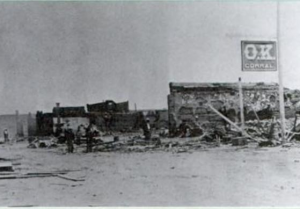 1929 would be right. I guess that the thing that seemed strange to me was the fact that when Wyatt Earp passed away, my own dad was five years old. Yes, he was an old man, and my dad a young boy, but for those five years, their life spans occupied the same space in history. And yet, my dad’s life had no connection to the time of Wyatt Earp, or to the man that he was.
1929 would be right. I guess that the thing that seemed strange to me was the fact that when Wyatt Earp passed away, my own dad was five years old. Yes, he was an old man, and my dad a young boy, but for those five years, their life spans occupied the same space in history. And yet, my dad’s life had no connection to the time of Wyatt Earp, or to the man that he was.
Wyatt Earp was a boy in search of adventure, and ran away from home twice after the Civil War broke out when he was 13. He went to join up with his two older brothers, Virgil and James. Each time he ran away, he was caught before he could reach the battlefield, and he was sent back home. Finally, at the age of 17, he left for good. His family had moved from the Illinois farm to California, but Wyatt wanted adventure, so he headed out to seek his own idea of life. He worked many different jobs, most notably as a lawman, and of course, a gambler. Life was not kind to Wyatt Earp. At a point when he was finally ready to settle down with the woman he loved, he married Urilla Sutherland, the daughter of the local hotel owner. The couple married about 1870, built a house in town, and were excitedly awaiting the birth of their first child. Then, life hit him with it’s most 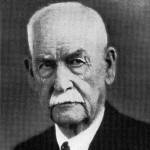 cruel blow. Within a year of their marriage Urilla contracted Typhus and died, along with their unborn child. Wyatt went off the deep end and became wild again. Eventually, he would be suspected of killing one of the suspects in his brother, Morgan’s death.
cruel blow. Within a year of their marriage Urilla contracted Typhus and died, along with their unborn child. Wyatt went off the deep end and became wild again. Eventually, he would be suspected of killing one of the suspects in his brother, Morgan’s death.
Unfortunately…or maybe fortunately, the west began to settle down. Wyatt was getting older. He settled in Los Angeles and hoped to have the Old West and his own legacy portrayed in film, but Hollywood wasn’t interested until after his death. I suppose it was then that Westerns moved into the forefront of television and movies. Westerns would then have a long run of popularity in the homes of many people…ours included.

